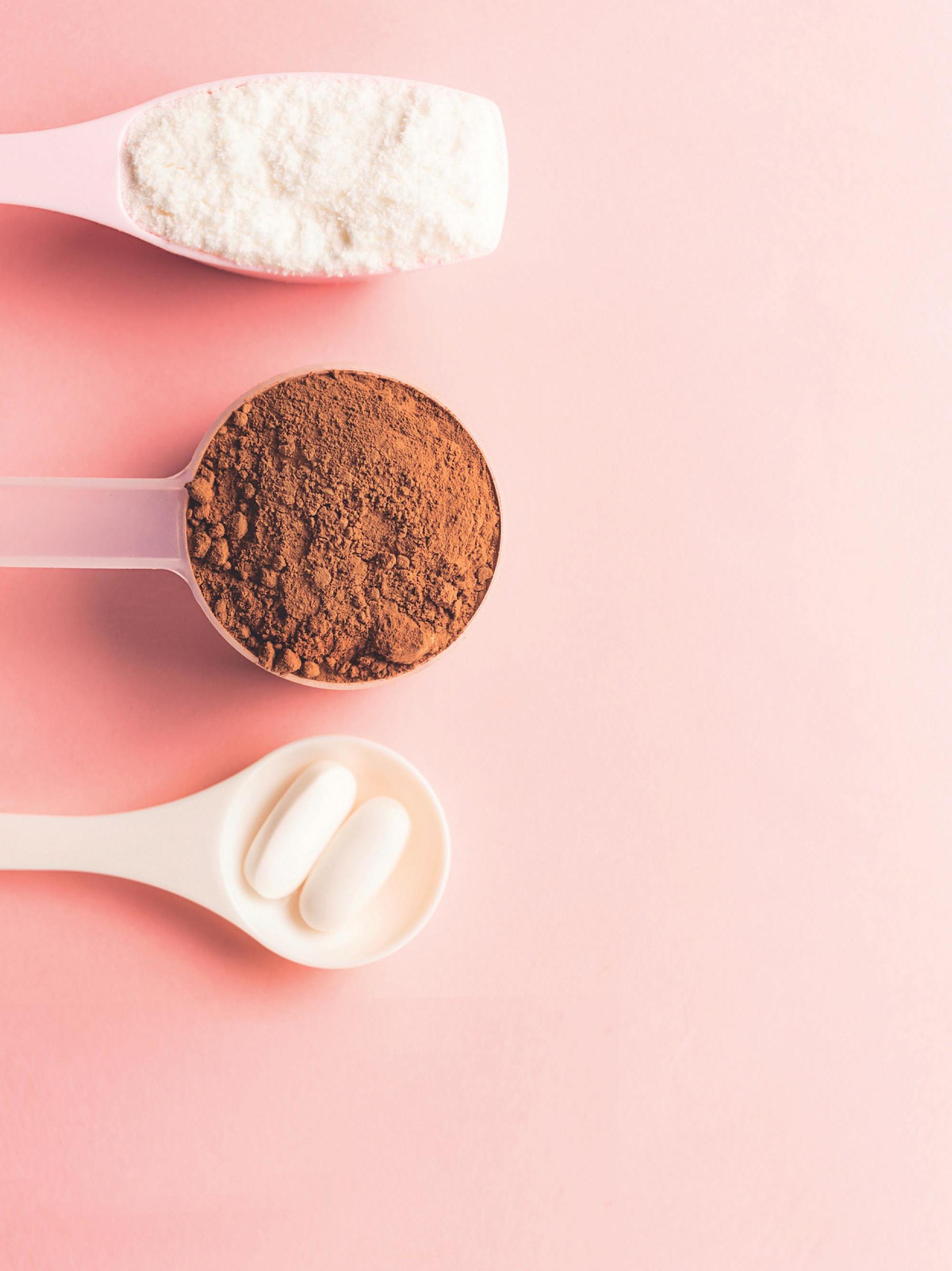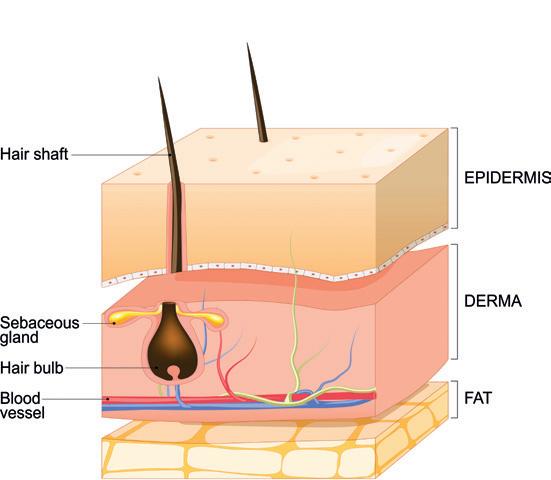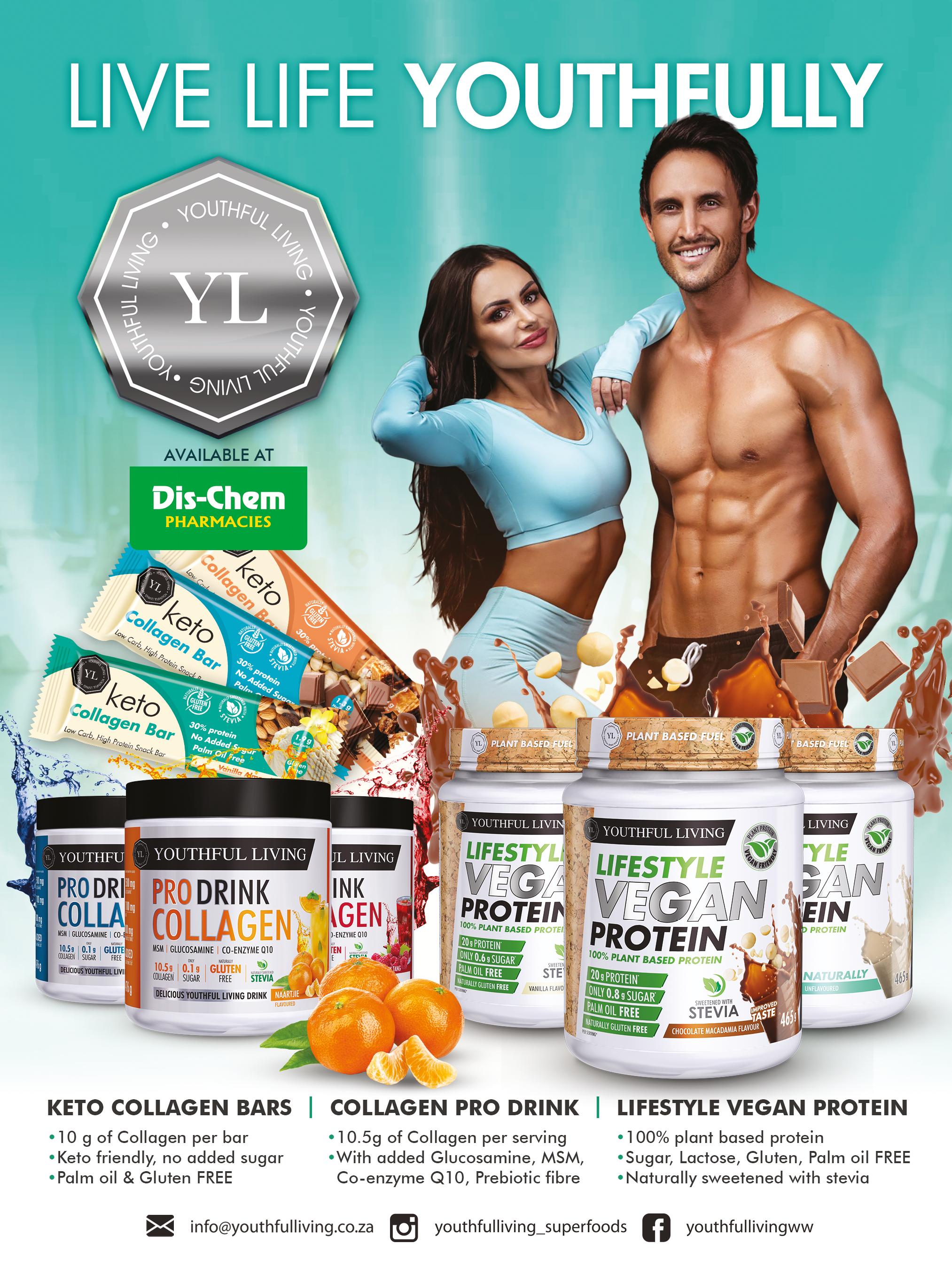
4 minute read
Supplements
from DCLF Issue 8
YOUR NEW BODY DESERVES FIRM SKIN

STRUCTURE OF COLLAGEN FIBRE
Collagen molecule
Fibrils
Collagen fibre Elastin
In our quest to sculpt a better body, we regularly hit the gym to lift weights, do some cardio and follow a healthy and balanced diet with additional support from quality supplements.
Doing this over time will start to transform our body. However, we can also expect a few unwelcome physical changes that commonly accompany major weight loss, like saggy skin and stretch marks.
A SAGGY AFFAIR
Skin is an incredibly elastic living organ, which can regenerate itself by replacing dead cells. However, the different layers each have different types of cells.
The cells on the outer layer (the epidermis) are constantly shed and replaced with new cells, while the skin cells under the epidermis tend to have a lower turnover
rate.
These lower layers, called the dermis and subdermis, consist of elastic connective tissues, fibres, blood vessels and various other components that can stretch or contract.

THE STRETCH MARK SAGA
Stretch marks are a form of scarring that becomes more
visible following weight loss. The damage occurs when the middle skin layer (dermis) tears due to excessive and consistent stress.
WHAT HAPPENS WHEN YOU LOSE WEIGHT
The dermis makes up roughly 90% of skin’s thickness and its elastic fibre and collagen composition helps to retain the skin’s shape and tautness.
When you lose weight, especially when it happens rapidly, your skin loses structural integrity as you lose the fat and muscle tissue that kept the elastic components in place. And the pace of your weight loss may also leave insufficient time for your skin’s elasticity to adapt. In addition to weight loss, age, poor nutrition, dehydration, excessive sun exposure and smoking can all affect skin elasticity.
The dermis can lose its elasticity when it weight loss is placed under severe stress due to excessive
weight gain, significant muscle development, or
during pregnancy and can subsequently tear, which then forms stretch marks.
Hormonal changes
pregnancy associated with puberty, pregnancy, exercise (mainly weight lifting) and hormone replacement therapy can also influence stretch marks. The implicated hormones (called glucocorticoids) prevent the body from forming more of the collagen and elastin fibres that keep skin taut. This impacts the skin’s structural integrity and makes it easier for it to tear when placed under stress.
Severe pulling or repetitive forces on the skin from activities like heavy weight lifting or gymnastic-type activities can reduce dermis elasticity, also causing stretch marks.
SUSCEPTIBLE AREAS
This pulling and stretching can happen anywhere on your body, but is more likely to occur in places that have larger fat deposits.
The most common places that experience loose skin or stretch marks include the abdominal region, especially near the belly button, the back of the upper arms, underarms, breasts, back, inner and outer thighs, hips and buttocks.

COLLAGEN TO THE RESCUE
Thankfully, there are numerous treatments available that may help to reduce stretch mark formation and firm loose skin.
Some of the most commonly used options include supplements and creams that provide or stimulate collagen growth and the formation of new elastin. Collagen is a complex protein that makes up 30% of the body’s protein and contains
19 different amino acids, which are vital building blocks for tissues, including skin.
LF RECOMMENDS
Collagen is present in our muscles, connective tissues such as ligaments and tendons, and in skin, hair and nails. From an aesthetic perspective, collagen helps to give our skin elasticity and firmness. There are at least 28 different types of
collagen. The most common are types 1 to 5, with type 1 the most plentiful, accounting for 90% of total collagen in our bodies. It is also a vital form to create firm skin because it has a denselypacked fibre structure.
In supplement form, collagen peptides or hydrolysed collagen offer the most effective products for skin health. Hydrolysed collagen undergoes a process called hydrolysation, which breaks down collagen into peptides for optimal absorption.
DIET DOUBLE-UP
You can also get collagen and other important skin-supporting nutrients like elastin from your diet, which generally come from protein-rich food sources.
Other important diet-derived nutrients for skin health include essential fats, vitamins A, C, D and E and zinc, which support natural collagen and elastin production.
Optimal hydration is also vital to maintain skin elasticity. Aim to drink at least two litres of water a day for skin health and vitality. LF




